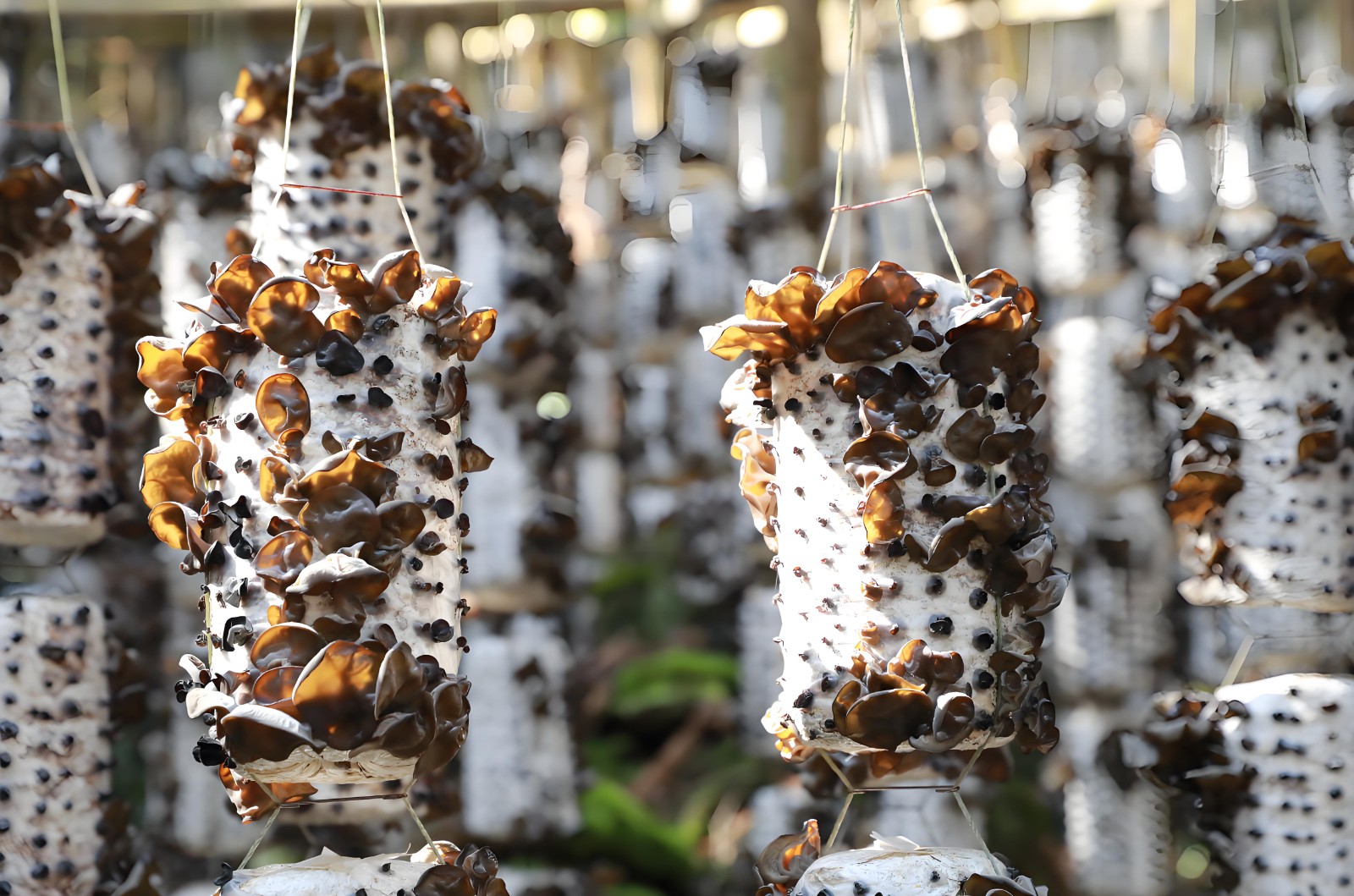News
Black Fungus (Auricularia heimuer).

Also known as: wood ear, light fungus, fine fungus, cloud fungus, etc.
Classification: Agaricales, Agaricales, genus Auricularia. Recent molecular systematics studies indicate that the fungus widely cultivated and distributed in China is not the European Auricularia auricula-judae, but rather the black fungus Auricularia heimuer.
Ecological Distribution: Wild black fungus (abbreviated as "fungus") is widely distributed, growing in summer on rotten wood of broad-leaved trees such as mulberry, locust, willow, elm, and oak. Dongning, Mudanjiang, Jiaohe, and Huangsongdian in Northeast China are the main production areas, while Longquan, Zhejiang, is the southern black fungus distribution center.
Morphological Characteristics: The fruiting body grows in clusters, often in a shingled, overlapping pattern, and is ear-shaped. It can be leaf-shaped or nearly forest-shaped.
Wild Black Fungus (Zhang Peng)
Margins are wavy and thin, anchored to the substrate by short, lateral stalks or a narrow base. Initially, it is soft, colloid, sticky and elastic, then slightly cartilaginous. After drying, it shrinks strongly and becomes black, hard and brittle, horny or almost leathery. The outer surface of the back is curved, purple-brown to dark blue-gray, and sparsely covered with short hairs. The vegetative body of the fungus is a slender, septate hyphae.
Categories
Contact Us
- +86 15093267083
- +86 15093267083
- amy@zzbelead.com
- +8615093267083




